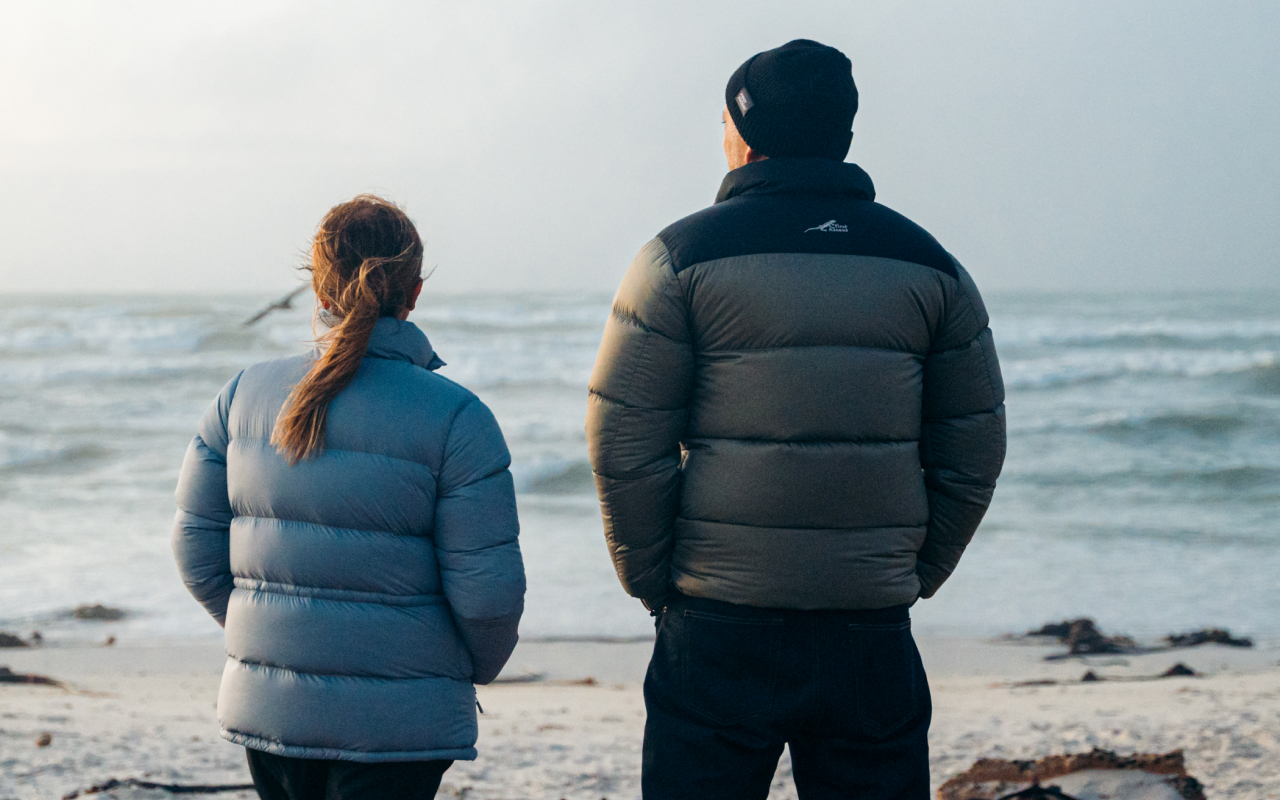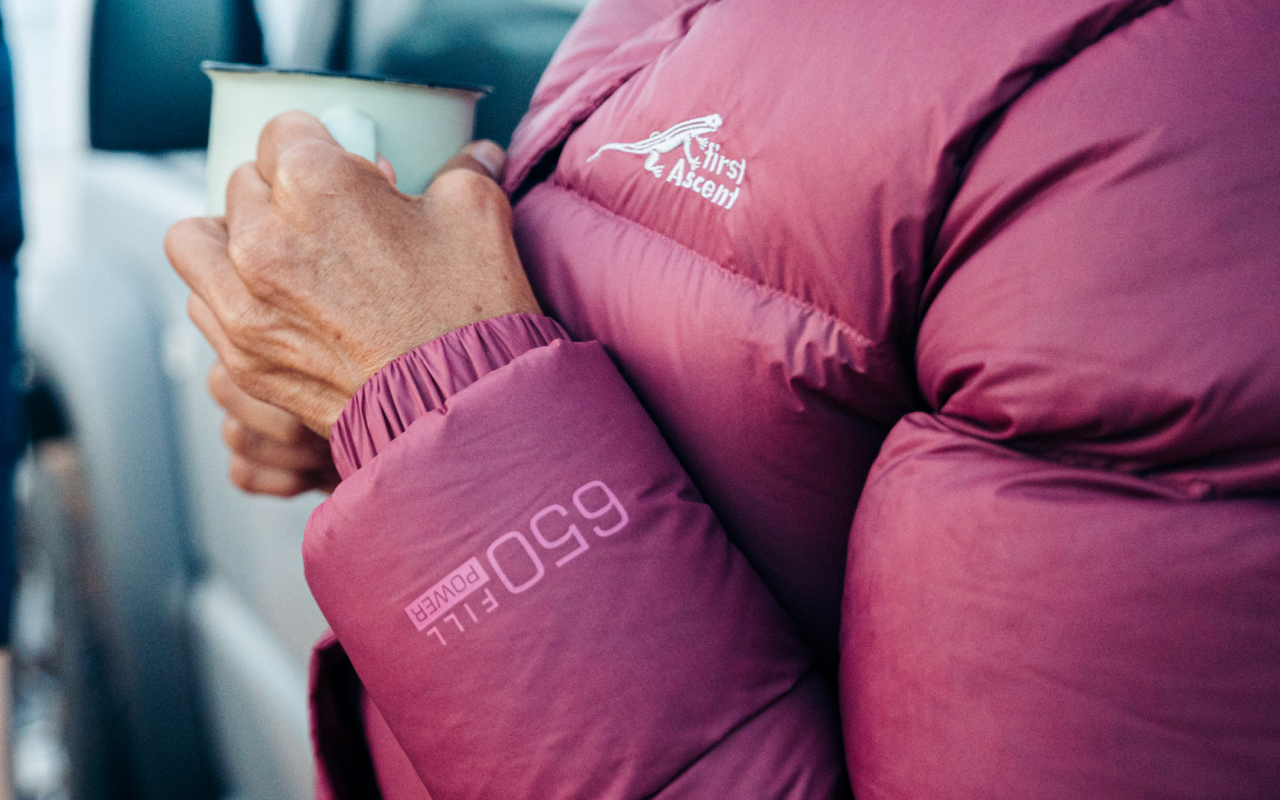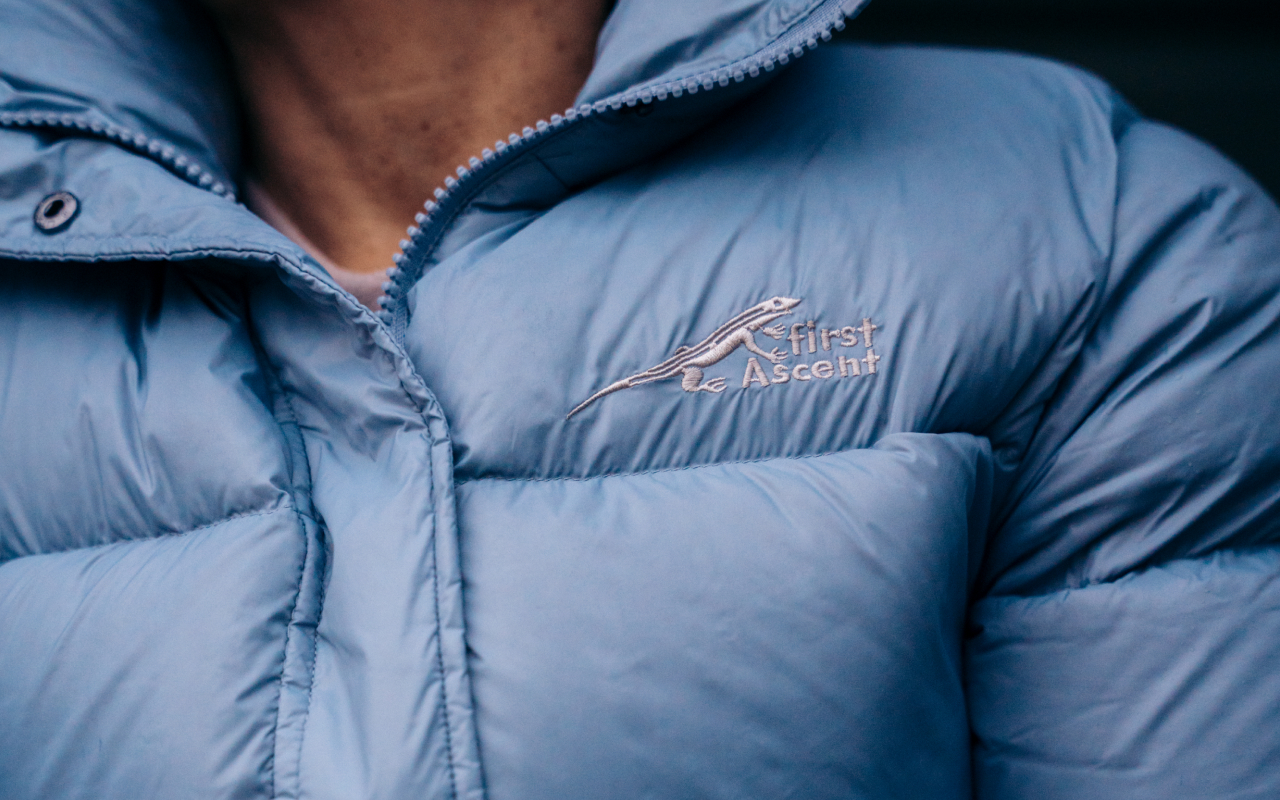Synthetic jackets are a winter essential - you’ll see them everywhere from outdoor sports to the office. They get their name from their stuffed baffles, giving them a ‘puffy’ or quilted look. The stuffing is usually either natural down feathers, or synthetic materials that mimic the insulating properties of down.
Down and synthetic puffer jackets look almost identical, and both offer warm lightweight options for winter. They are both extremely comfortable, with a “pillowy” feel. Both down and synthetic fillings are quite durable, and depending on the quality of the outer shell of the jacket, they can last a good while.
However, they have key differences in their insulation, versatility, maintenance and cost. Read below for a comparison of down versus synthetic jackets.

Warmth: Down
Down is nature’s best insulator. The air pockets between the packed feathers trap body heat and ensure minimal heat loss, providing superior warmth and ultimate comfort. Down garments are known to be lightweight, easily compressible, breathable and durable, making them awesome travel jackets.
A synthetic jacket must be thicker to provide the same warmth. Advances in technology have started to compete, but they don’t yet compare to Down’s amazing warmth-to-weight ratio and loft. However, as synthetic jackets aren’t as good at trapping heat, it does make them slightly more breathable.

Waterproof: Synthetic
Whilst our down jackets have a water-resistant Microtex outer layer, they are not fully waterproof. One issue with down jackets is that the down feathers insulation becomes compromised when wet - it won’t keep you as warm because the feathers will clump together and it will take a while to dry.
Synthetic material stuffing handles water much better, as it doesn’t have to contend with the above - and it’s a lot quicker to dry. So if you’re out and about in places where the weather is uncertain, it’s best to go with a synthetic option.
Compactness and Versatility: Down
One of the biggest selling points of a down jacket is its weight. They are generally lighter and thinner than their synthetic counterparts with the same levels of warmth. This makes them easy to travel with or carry as an emergency layer.
With down jackets being the lighter option, they’re also more compact. They often come with their own stuff bags that compress the jacket into a small easily portable pouch. Additionally, they also allow for compression for longer periods without losing their insulation abilities - a problem synthetic insulation often faces. As a synthetic jacket has to contain more fill for the same amount of warmth, a down jacket may also offer you a little more range of motion depending on the thickness of the jacket.
Synthetic jackets are slightly more bulky due to their filling but are still lightweight enough to easily carry around. Some come with their own stuff bags as well. They’re also more versatile in rainy or wet conditions.

Maintenance: Synthetic
A down jacket takes a lot more maintenance. Washing for example is a careful process - you can’t simply throw it in a washing machine. If not washed and dried properly, the delicate down feathers can clump weirdly and no longer provide the same level of insulation. Down jackets should be washed using a gentle detergent (preferably by hand), dried on a low-heat setting or air-dried to prevent damage to the feathers.
Synthetic jackets don’t have these same issues, though it is still recommended to only use liquid detergent, and to avoid softeners and bleach. Depending on the quality of your synthetic jacket, it may still be best to avoid high heat.
Learn more about how to care for your down jacket here
Cost: Synthetic
A synthetic jacket is usually cheaper due to its production. The material for synthetic jackets is easier to source than down, as it’s not natural; and manufacturing the jacket as a whole is generally more cost-effective. Most synthetic jackets are stuffed with materials such as polyester or nylon - though there are new technologies like Primaloft that have come into the market.
Down jackets are more expensive. Because we only use Responsibly Sourced Down, we ensure only the best quality feathers are used in production, meaning it has to be imported. Some of our down jackets, such as the Malamute, are hand stuffed.
When to use Down vs Synthetic
Synthetic jackets are a cheaper option that performs better with quickly changing weather conditions and is a lot easier to maintain. However, it’s heavier and bulkier. A synthetic jacket is ideal for hiking in wet or humid environments.
Shop Synthetic Jackets
For all other conditions, a down jacket is a better choice as it has a superior warmth-to-weight ratio and is easily compressible, making it more convenient to travel with - and a quick extra layer. It’s extremely warm, breathable and comfortable. Whilst it may be a slightly bigger investment, down jackets are durable and built to last you through many long winters.
Shop Down Jackets
View our Guide on Down
Learn more about Down
| Feature | Down Jackets | Synthetic Jackets |
| Warmth | Warmer | Less warm |
| Weight | Lighter | Heavier |
| Compressibility | More compressible | Less compressible |
| Durability | Less durable | More durable |
| Water-resistance | Less water-resistant | More water-resistant |
| Price | More expensive |
Less expensive |
